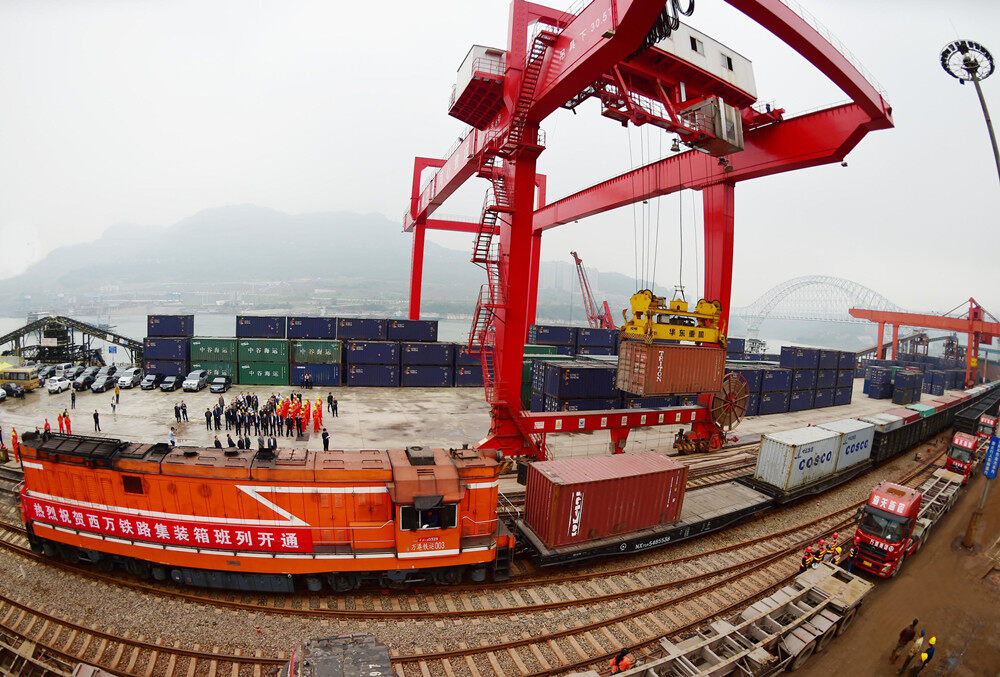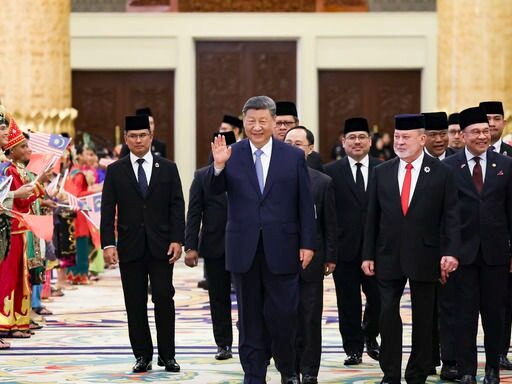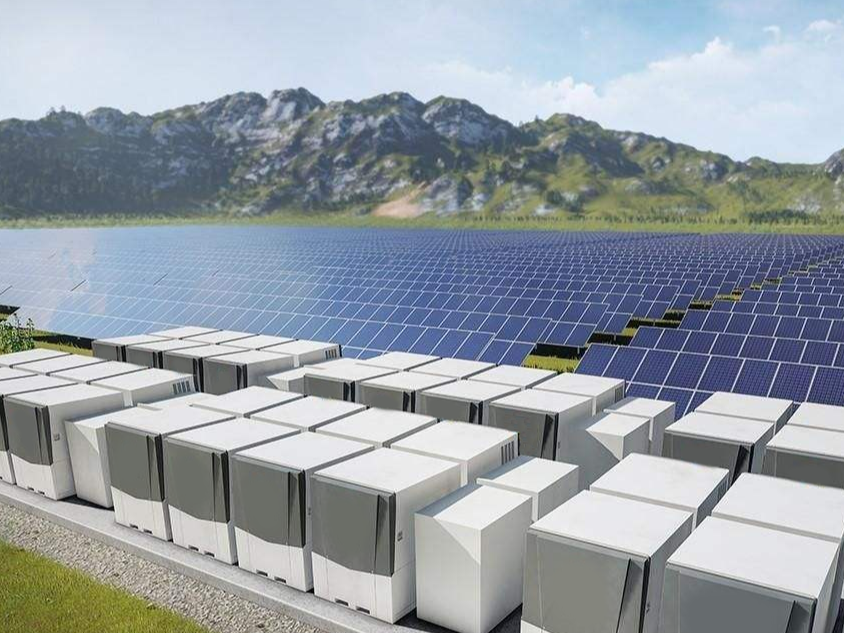- The Yangtze River is a golden waterway that traverses China from east to west and radiates from north to south
- The world's largest and busiest navigable river, inland river freight volume ranks first in the world for 15 consecutive years

From the beginning of ancient times, the ancestors used wood as a boat, hitting the water flow, and opened the prelude to the Yangtze River shipping for the benefit of China. The south ship and the north horse are the two major means of transportation in ancient China, and the Yangtze River, which connects east and west, and connects south and north, can be called the national transportation artery. The Yangtze River, from the snow-capped mountains to the sea, is like a giant on a stalwart shore, which has witnessed the brilliant civilization of China for five thousand years. Since the founding of New China, after 70 years of ups and downs, the shipping on the Yangtze River has undergone tremendous changes. While the Yangtze River Shipping has effectively enhanced the people's sense of gain, happiness, and security, it also engraved the footprints of generations of Yangtze River fighters and witnessed the magnificent history of water transport in New China.
River Channel Network World
Since ancient times, the Yangtze River has been open and closed with "Northern passengers following Nanjia, Wuyao Shu boat", leading the pioneer of ancient commercial civilization. In the historical process of the development of the Chinese civilization for thousands of years, the Yangtze River has always been like a mother, providing her children with a steady stream of material, cultural, and ecological nourishment. The ancient Chinese turned the Yangtze River moat into a golden waterway, making it the main artery of water transportation. Through dynasties and dynasties, the mission of passing grain, silk, salt, tea, porcelain and other commerce and trade goods from east to west, and from south to north, is promoting economic and social development. , Expanding cultural exchanges and other aspects play an irreplaceable role.
In ancient times, under the constraints of productivity, the primitive state of sailing lasted for thousands of years. By the Spring and Autumn Period and the Warring States Period, under the impetus of economic and social development and military demand, the development and management of waterways has emerged. The expansion of natural river navigation and the excavation of artificial canals have become the embryonic form of a nationwide water transportation network for commodity circulation. As early as the late Spring and Autumn Period, Wu State in the lower reaches of the Yangtze River built Hancheng and opened Hangou in Yangzhou, which united the Yangtze River and Huaihe River basins for the first time in Chinese history. During the Sui and Tang Dynasties, the Grand Canal closely linked the five major water systems of the Yellow River, Huaihe River, Yangtze River, Qiantang River, and Haihe River, and linked the economic and culture of the north and south of the Yangtze River, making it the political center of the north and receiving continuous material support from the south.
Tang Guanjun, director of the Yangtze River Navigation Administration Bureau of the Ministry of Transport, introduced in an interview that in 2017, the throughput of cargo on the mainstream of the Yangtze River reached 2.5 billion tons, ranking first in the world inland rivers for many consecutive years. The golden waterway of the Yangtze River starts from Shuifu Port in Yunnan to the mouth of the Yangtze River, with a total length of 2,838 kilometers. At present, the ports along the Yangtze River have basically formed an overall pattern of radiating the entire river basin with major national ports as the backbone and regional important ports as the basis. The Yangtze River Economic Belt covers 11 provinces and cities including Shanghai, Jiangsu, Zhejiang, Anhui, Jiangxi, Hubei, Hunan, Chongqing, Sichuan, Yunnan, and Guizhou. It covers an area of approximately 2.05 million square kilometers, accounting for 21% of China, and its population and economic aggregate exceed 40% of China. The golden waterway of the Yangtze River traverses east and west, and its tributaries connect north and south. It is an important support for the development of the Yangtze River Economic Belt. 85% of iron ore, 83% of thermal coal and 85% of foreign trade cargo transportation required for economic and social development along the Yangtze River need to be provided by it. . In recent years, the Yangtze River, as an important link connecting the Silk Road Economic Belt and the 21st Century Maritime Silk Road, has coordinated the opening of the coast, along the river, along the border and inland. Entering the new era, the development of the Yangtze River Golden Waterway has also stood at a new historical starting point. With the control of illegal wharves, the "water-rail combined transportation" and "river-sea combined transportation" have become more and more perfect, and the Yangtze River shipping has also ushered in new developments. opportunity.
The golden waterway provides surging kinetic energy
In recent years, the function of the golden waterway has been continuously improved. Since 2016, with the completion and commissioning of various waterway improvement projects, the Yangtze River Water Expressway has become more and more unblocked, and the potential of the Golden Waterway has been continuously released. In 2020, the trunk line cargo throughput will exceed 3 billion tons. This inland waterway with the largest traffic volume and busiest navigable navigation in the world is providing surging momentum for the development of the Yangtze River Economic Belt.
On March 26, 2021, the 6-meter water depth channel improvement project of the Wuhan-Anqing section of the Yangtze River trunk line was put into trial operation. The minimum maintenance water depth of the Wu'an section was raised from 5 meters to 6 meters. Ability leap again.
The Jiuqu ileum and beaches in the middle reaches of the Yangtze River have many shallow waters, and the navigation channels have evolved drastically. The minimum maintenance water depth of the channel from Yichang to Anqing during the dry season is 3.5 meters to 5 meters, which is much lower than the upstream and downstream water depths, which has become an intestinal obstruction restricting the development of the golden waterway. In March 2016, the "645 Project" (Anqing to Wuhan with a water depth of 6 meters and Wuhan to Yichang with a water depth of 4.5 meters) was included in the "Outline of the Development Plan for the Yangtze River Economic Belt". In October 2018, the 386.5-kilometer Wu'an Section project with a total length of 3.744 billion yuan was started to systematically rectify 7 obstructive beach sections including Luohuzhou and Daijiazhou. Tang Guanjun, director of the Yangtze River Navigation Management Bureau of the Ministry of Transport, said that the trial operation of the Wu'an section marked a major achievement in the construction of the "645" project, forming a water expressway that "smoothly travels through Hubei, Jiangxi and Anhui, and reaches Jiangsu, Zhejiang and Shanghai."

This is not the first time that the country has invested heavily in the management of the middle reaches of the Yangtze River. In 2016, the Jingjiang channel improvement project with an investment of 4.33 billion yuan was completed. 9 beach sections and 13 shoals of the 280-kilometer channel in Hubei and Hunan were systematically treated, and 3,000-ton cargo ships could be navigable day and night. The length of one meter and the deepening of one inch, the gold content of the Yangtze River Golden Waterway has been increasing year by year. Downstream, the 12.5-meter deep-water channel below the Yangtze River in Nanjing will officially operate in 2019, forming a 431-km deep-water channel from the mouth of the Yangtze River to Nanjing Xinshengwei, and the Jiangsu section of the Yangtze River enters a new era of big ships. Upstream, the waterway construction project from Jiulongpo to Chaotianmen of the Yangtze River will be put into trial operation in June 2020. The water depth of the waterway will be raised from 2.9 meters to 3.5 meters, which is of great significance to Chongqing's construction of a comprehensive three-dimensional transportation network. In December 2020, the Chaotianmen-Fuling River Channel Improvement Project started. After completion, a 5000-ton cargo ship can arrive in Chongqing all year round. Since 2016, the conditions of the 2687.8 kilometers of the Yangtze River trunk line have been greatly improved, and the channel mileage has been improved by 1670 kilometers: 2,000-ton ships directly to Yibin, 3,000-ton ships directly to Chongqing, 10,000-ton ships directly to Wuhan, and 50,000-ton ships directly to Nanjing.
According to industry insiders, the most direct benefit is the improvement of navigation conditions, which will increase the ship's draught, increase the actual load rate and decrease the shipping cost. It can also profoundly change the organization of ship transportation and the shipping pattern. After the completion of the 12.5-meter deep-water channel improvement project on the Yangtze River below Nanjing, Jiangsu’s riverside ports changed from "river ports" to "sea ports", and international ocean transportation extended more than 400 kilometers inland from the mouth of the Yangtze River. The actual load rate of ships of 50,000 to 70,000 tons has increased by nearly 25%, and transportation costs have been greatly reduced; realizing more efficient river-sea combined transportation and river-sea direct transportation; promoting the large-scale and standardization of ships, and the intensive operation of port shorelines. According to calculations, every time the channel depth increases by 0.1 meters, the 2000-ton cargo ship can carry about 170 tons more cargo, and the profit can increase by 10%. After the Wu'an section project is put into operation, it will boost regional GDP growth by more than 45 billion yuan. Zhang Lin, director of the Wuhan Newport Management Committee, said that the Wu'an section project is an important infrastructure that Hubei has been looking forward to. It will greatly improve the shipping efficiency of the middle reaches of the Yangtze River, especially in Wuhan. It will generate positive results for every inch of money and build a new development pattern for Wuhan. The important node hub plays an important role.
According to calculations, every time the channel depth increases by 0.1 meters, a 2,000-ton cargo ship can carry about 170 tons more cargo. "The middle reaches of the Yangtze River is worth every inch of water." Tang Guanjun said that by 2022, the problem of "deep at both ends and shallow in the middle" of the Yangtze River's trunk route will be effectively solved, and a "quick on the water" linking the four provinces of Hunan, Hubei, Jiangxi, and Anhui will be effectively solved. road".

As the obstruction of the golden waterway of the Yangtze River is gradually opened up, the National Container Iron-Water Combined Transport Demonstration Project in Wuhan Yangluo Port will also usher in a golden opportunity for development. In 2020, "Shanghai-Wuhan-Sichuan-Chongqing" and "Shanghai-Wuhan-Wuhan-" will be opened one after another. Shaanxi and Xinjiang" two two-way logistics channels, and successfully opened the "Shanghai-Han-Chengdu" foreign trade container iron-water combined transport line in 2021.
As Chongqing, Hubei, Jiangsu and other places continue to improve the multimodal transportation system of water, water and iron, and water and water, the three-chain integration development pattern of transportation chain, logistics chain and industrial chain has gradually formed, and cities along the river will become a chain of beads to build a comprehensive three-dimensional transportation along the river. The corridor supports the framework of the high-quality development of the Yangtze River Economic Belt. Today, the Yangtze River trunk line has formed three major shipping centers, 22 major ports and 26 open ports for water transportation. In the 14 provinces and cities of the Yangtze River system, there are nearly 120,000 inland cargo ships, with an average tonnage of 1,780 tons of trunk cargo ships, which ranks the world's advanced level. Editor/He Yuting
Comment
 Praise
Praise
 Collect
Collect
 Comment
Comment
 Search
Search














Write something~